A symbol of love, the Taj Mahal Are you familiar with it already? This is an outstanding illustration of the best Mughal architect. That being said, the majority of you know it as a massive white mausoleum surrounded by four towers. And a large pool in which the monument is reflected. Mumtaz Mahal was the favourite of the three wives of the Mughal Emperor Shah Jahan, and in her honor, he erected the most exquisite monument. Taj Mahal has an impressive appearance, but you probably don’t know a lot of fascinating facts about it. You will discover eleven fascinating facts about the Taj Mahal in this article!
An Overview of the Taj Mahal in Brief
Shah Jahan began the work almost immediately after passed away Mumtaz Mahal, one of his three wives.
Since the Mughal era of the seventeenth century (1653 AD), the enormous architectural jewel has stood in Agra, Uttar Pradesh. It was designated “UNESCO World Heritage Site” in 1983.
As the monument was being built, thousands of artisans perished.
Gems from various sources worldwide were gathered for the Incorporated.
This isn’t a one-year skill! Over two decades were needed to finish it.
In 2007, it was declared as one of the world’s seven wonders.
Factual information regarding the Taj Mahal: These facts are specifically for you:
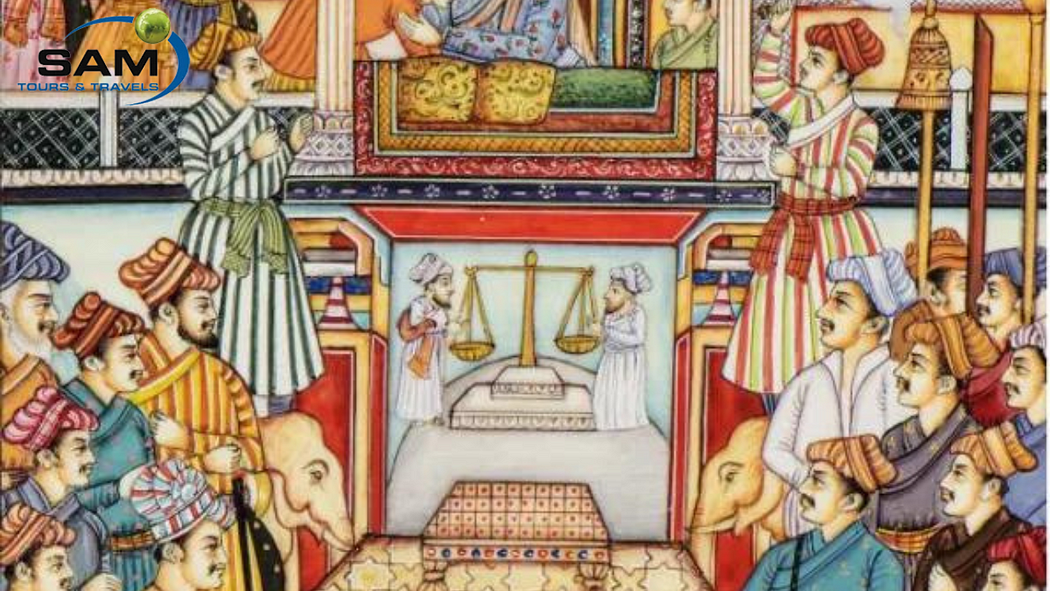
It Took More Than Two Decades:
With the guidance of Mughal Emperor Shah Jahan, the architectural wonder was first constructed in 1631. It took about twenty-two years to finish, ending in 1653.
Before departing this life in 1666, Emperor Shah Jahan presided over the Mughal kingdom until 1658. That means that he witnessed the 13 final years of his life as a fully realized recollection.
The Durbar of Shah Jahan
There Were Over 20,000 Craftsmen at Work:
You may already be aware that over 20,000 craftspeople, including workers, painters, stonecutters, and needlework artists, performed the incredibly labour-intensive work. In the process of working, many of them even perished.

Included in the number are:
Uzbek Sangmarmar (Marble) cutters.
The finest calligraphers in Iran.
Baluchistan stone cutters.
Can you imagine working with semi-precious and precious gems? That’s what the Taj workers do. Their amazing work was accomplished in the seventeenth century, without the benefit of current engineering understanding.
Furthermore, approximately one thousand elephants were working together to move items from different locations.
White marble gives the Taj Mahal its striking milky white tone. Furthermore, the mausoleum’s enchanted appearance was attributed to a total of 28 rare or semi-precious gemstones.

The white marble is sourced from Rajasthan’s Makrana.
Chinese imports included jade and crystal.
The exquisite lapis lazuli from Afghanistan.
Himalayan turquoise.
Jasper, a red-haired beauty, came from Punjab.
Sapphire hails from Sri Lanka.
Arab sent Carnelian.
The majority of those came from southern India.
Semi-precious jewels adorn the walls
Made of ebony and mahogany, it is firmly supported by large wells of these materials. The Taj Mahal is built upon them.
For these woodlands to be healthy and robust, they require plenty of water. Water is provided through the wells by the Yamuna River.
Nonetheless, the Yamuna River has been drying up lately. Thus, the Taj’s wall developed several cracks as a result of the depletion of water in the timber woods.
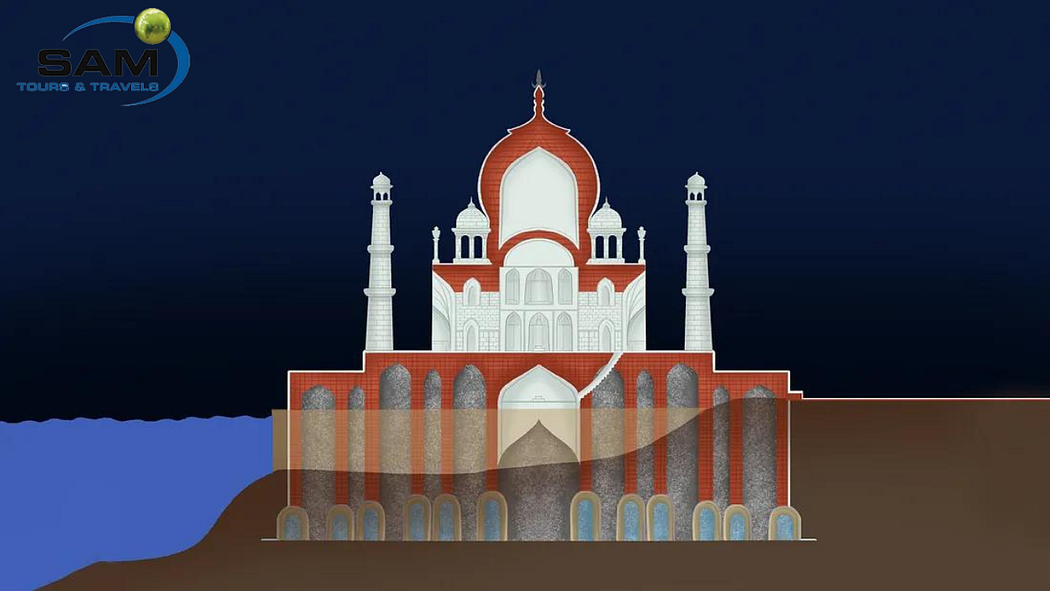
The Taj Mahal’s foundation
Qutub Minar, standing at a height of 72.5 meters, is the tallest minar in India. However, the dome is taller.
At 73 meters, the Taj Mahal’s dome reaches its highest height. Consequently, the tomb is taller than the Qutub Minar.
There Is Not a Perpendicular Between the Four Minarets:
The four minarets around the Taj Mahal’s main building are not perpendicular, as you may have observed.
They have an outward slant.
For visitors, it creates an optical illusion.
There is, however, a very significant and scientific reason why the structures were designed the way they were. The primary structure was shielded from earthquakes and other natural disasters by this action.
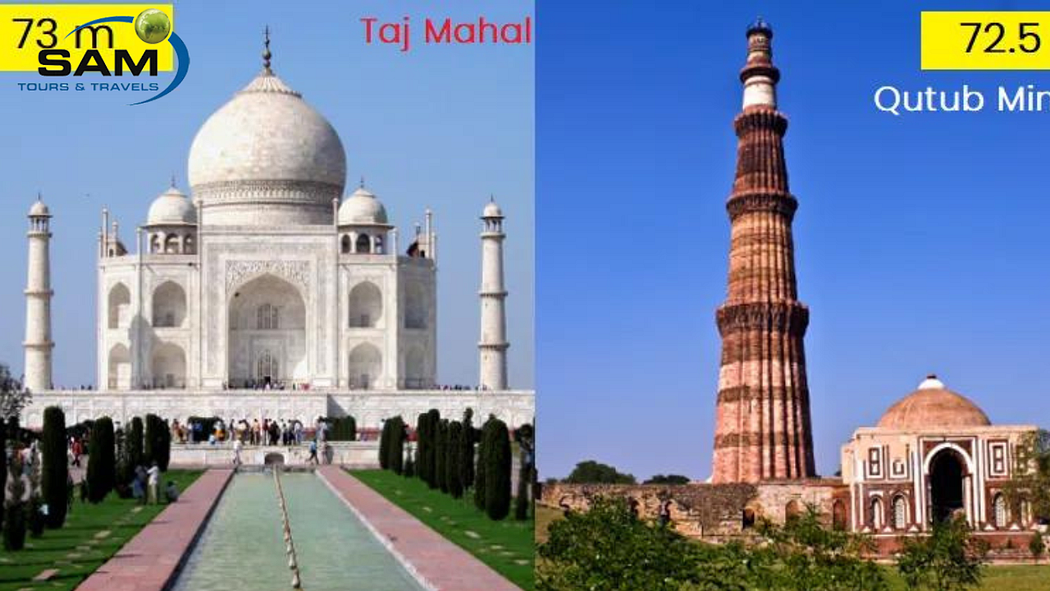
At that time, how scientific were the architects?
Mind-Blowing Inlayed Interior (Pietra Dura):
The inlaying method of Pietra Dura (Hard Stone) piqued the curiosity of Emperor Shah Jahan and other Mughal rulers.
Greek art is, in essence, European art.
Using this method, marbles are embellished with semi-precious gemstones to resemble gorgeous flowers.
This technique, which the Mughals adopted for the Taj Mahal, was originally from Italy.
The Taj looked like a trove of gems thanks to this exquisite inlay.
Pietra Dura Inlaid
It is not the intended entrance, but the main one:
Another fascinating fact that should be noted is: This is not the main entrance that the tourists see!
With its main entrance facing the Yamuna River, this is the authentic “Shahi Darwaza.” Waterways were used to convey the majority of Shahi guests during the Mughal era. The entrance gate was oriented toward the Yamuna for this purpose.
The main entrance, however, is now regarded as being at the garden end.
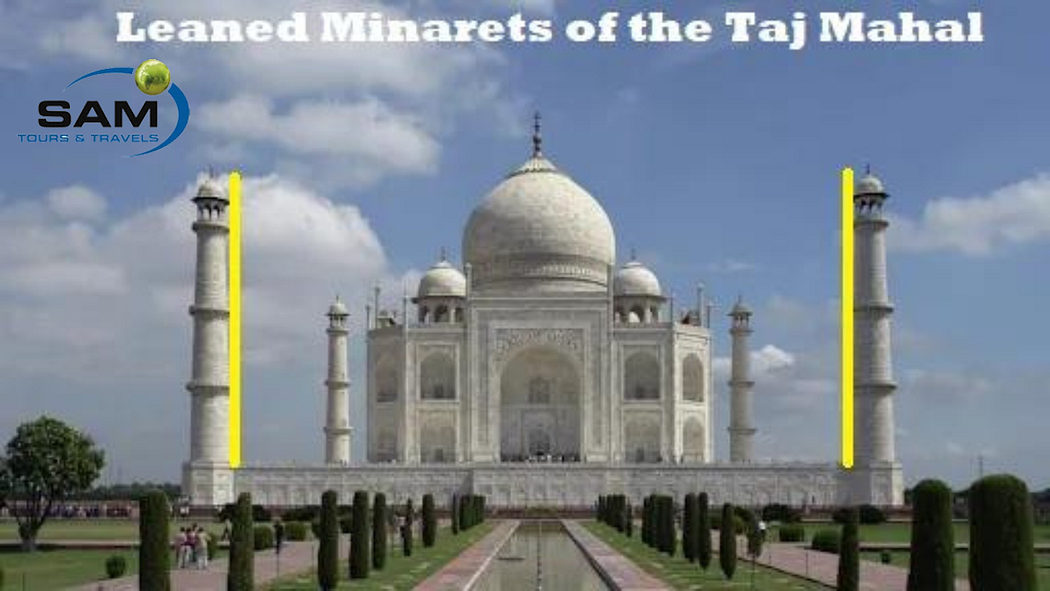
The Taj Mahal and Shahi Darwaza
Magnificent Calligraphy All Around:
It is true that there are calligraphies with verses from the holy Quran written on each wall of the Taj Mahal.
After six years of diligent work, calligrapher Amanat Khan created all those amazing inscriptions.
Mughal immigrants to India. In 1638, he completed the vast dome calligraphy. Also, he was employed by Akbar’s tomb.
The script used for all the inscriptions is Thuluth.
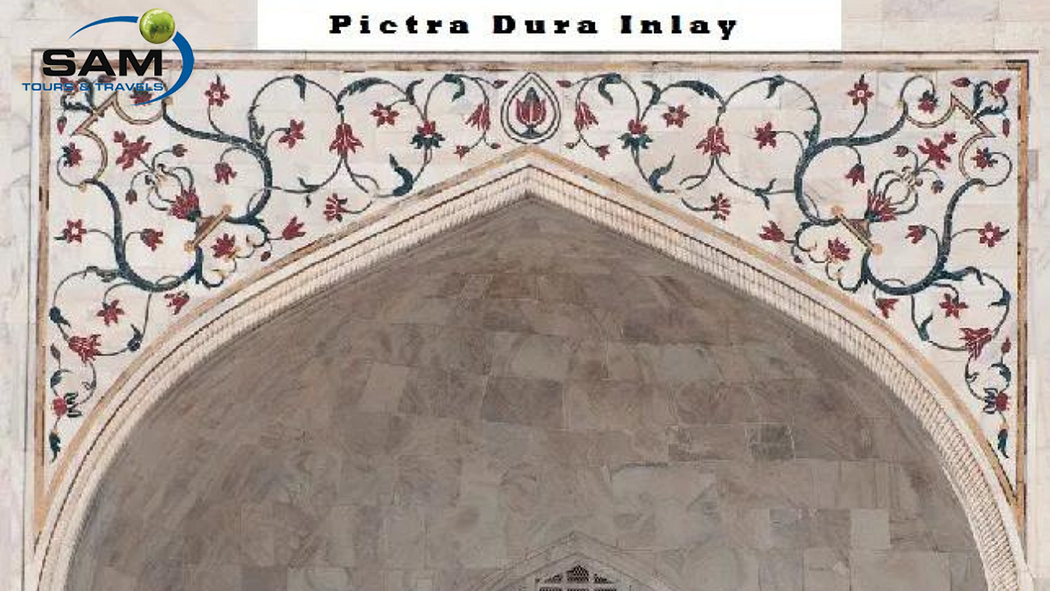
Taj Mahal Gets Facial Treatment:
The building’s entire structure, including the tomb’s white marble, turns brown-yellow as a result of growing pollution in Agra.
Therefore, in order to restore the tomb to its former splendor on a prearranged day, maintenance personnel use Multani Mitti and remove all debris and dust.
The procedure is called “Marble Façade.”
The Taj Mahal’s front
Vast Number of Visitors Per Year:
The Taj Mahal receives between 7 and 8 million visits per year.
In all, visitors from outside India number close to one million.
This tomb is the most visited in India because of its unparalleled beauty, brilliant architectural design, powerful symbol of love, and so on.
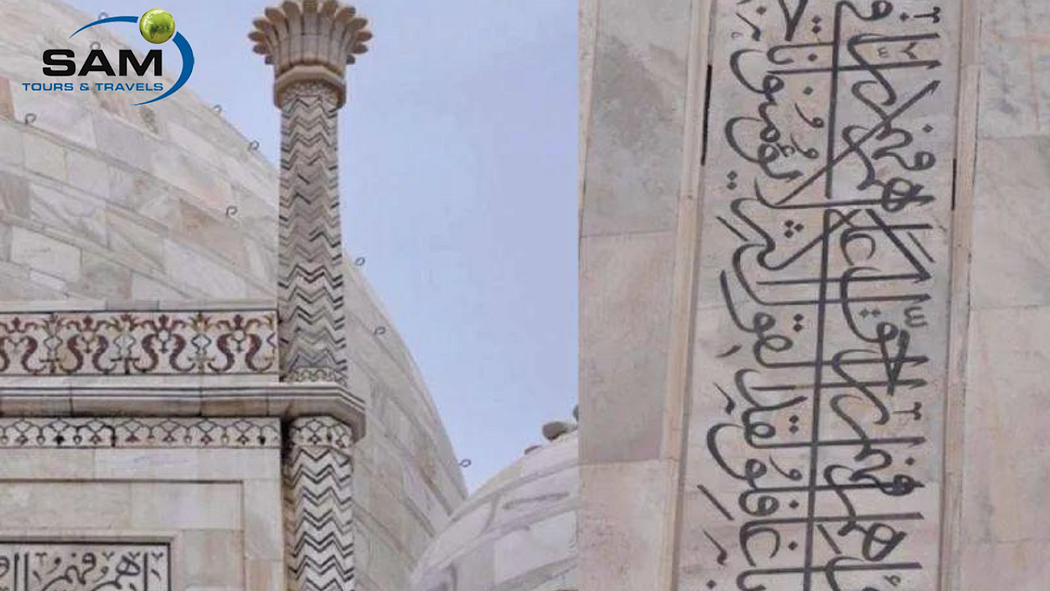
Tourists in large numbers at the Taj Mahal
According to Kaviguru Rabindranath Tagore, “The Taj Mahal rises above the banks of the river like a lone tear suspended on the cheek of time.” That sentence sums everything up.
I hoped the article was enjoyable. Share this with your friends and family if you enjoyed it, and feel free to leave a comment.
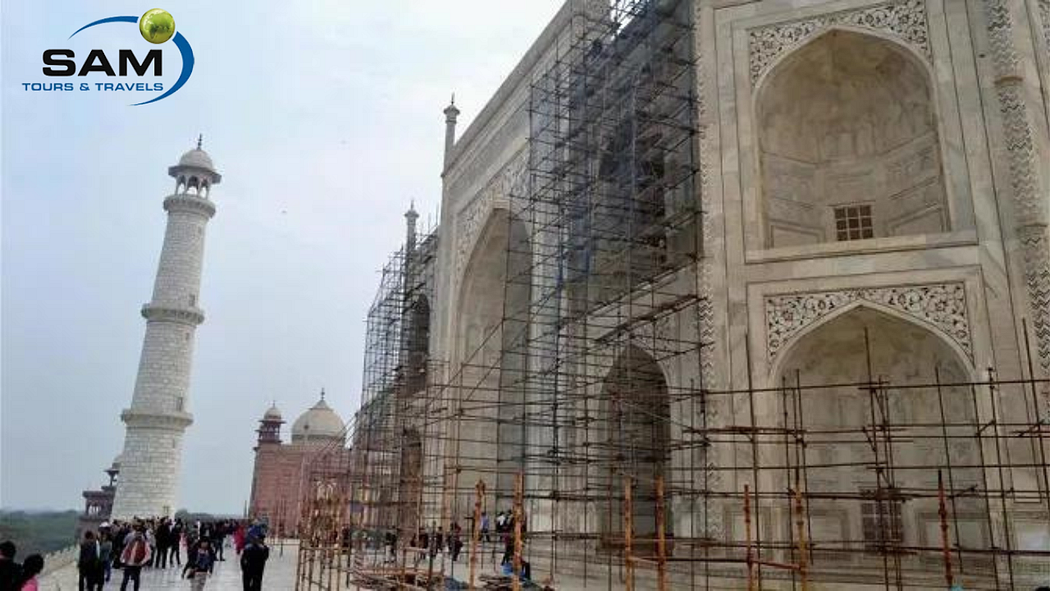
Comments